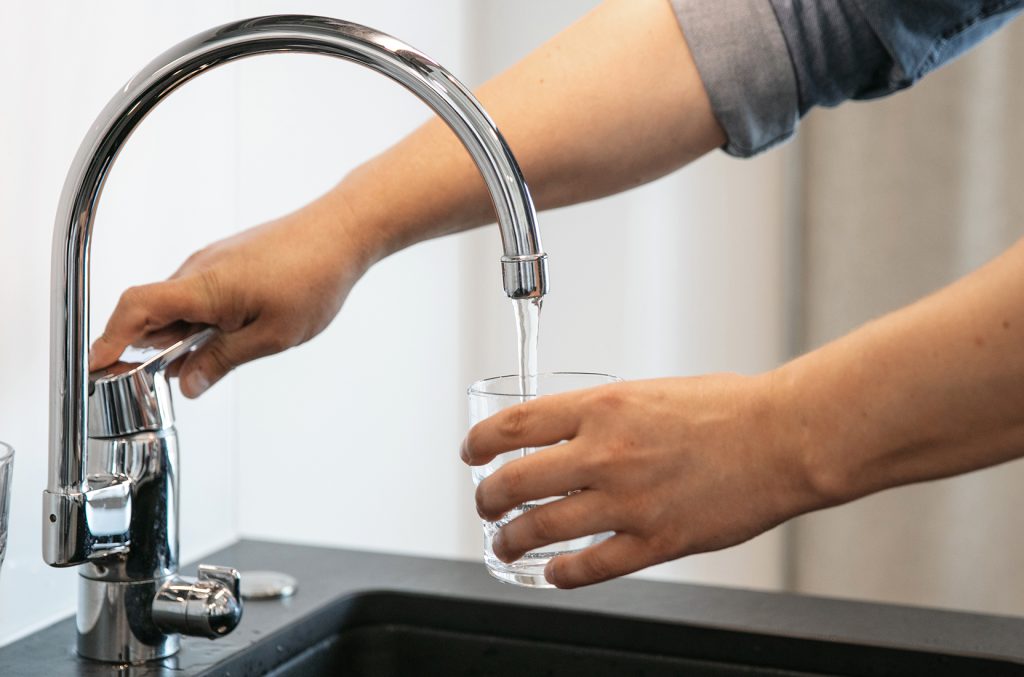Water procurement
Approximately two thirds of the water for household use in Tampere is made of surface water and the rest is groundwater. The surface water is taken from Roine and Näsijärvi lakes.
Altogether 20,9 million m3 of raw water was pumped into the water utilities in 2023. Out of this, 19,5 million m3 of treated water was pumped further into the pipe net. Groundwater accounted for approximately 25 % of the water pumped into the pipe net.
Water treatment ensures that the water is hygienic and that it travels unchanged in the distribution network all the way to the most distant water users.
Drinking water quality
Vellamo water quality service
Vellamo is a Tampere Water service that shows the quality of the drinking water in Tampere water supply network based on up-to-date observations and over 10,000 counting stations and geographic information.
Vellamo
Vellamo is a Tampere Water service that shows the quality of the drinking water in Tampere water supply network based on up-to-date observations and over 10,000 counting stations and geographic information.
Water hardness
The majority of the water supplied by Tampere Water is soft, meaning that its hardness is less than 5° dH. The hardness of water, meaning its calcium and magnesium content, is expressed in German degrees (°dH) or in millimoles (mmol per litre). The hardness of the water treated at the Rusko water purification plant is 3° dH (0.54 mmol/l), and the hardness of the groundwater is 2–6° dH (0.36–1.08 mmol/l).
Water softening is not usually necessary for dishwashers, for example. For most dishwashers, the threshold for softening is 6 °dH. Some manufacturers apply a lower threshold, and their instructions should be followed.
According to the Decree of the Ministry of Social Affairs and Health Relating to the Quality and Monitoring of Water Intended for Human Consumption, the taste and smell of tap water must be acceptable to the consumer, and unusual changes must not occur in these respects. An unusual taste or smell in tap water can be caused by the pipes in the property or the algae situation in Lake Roine, among other factors.
Tap water can sometimes contain deposits, such as brown iron precipitation, in conjunction with renovation work or due to changes in pressure. The problem can usually be solved by letting the water run until it becomes clearer. Air can also end up in the water supply network and turn the water cloudy. If the water clears by letting it stand, the cloudiness was caused by air.
In Tampere, the microbiological quality of the water directed into the water supply network is ensured through disinfection with chlorine or sodium hypochlorite. For this reason, the smell of chlorine in drinking water cannot always be completely avoided.
Monitoring water quality
Tap water may not contain microorganisms, parasites or chemical substances in such quantities or concentrations that may be hazardous to human health. The Decree of the Ministry of Social Affairs and Health Relating to the Quality and Monitoring of Water Intended for Human Consumption sets binding health-related quality requirements as well as quality recommendations that describe the usability of service water in accordance with a directive.
The health protection authorities of the City of Tampere are responsible for statutory monitoring in accordance with a monitoring programme based on the decree. In addition, the laboratory at the Rusko plant analyses more than 21,000 samples annually to ensure the water quality. The samples are collected from raw water sources, at different stages of purification, and from the supply network.
In addition to water purification, the Rusko plant monitors the entire distribution system: water supply, groundwater intake plants, pressure booster stations, gravity tanks and water distribution to the neighbouring municipalities.
